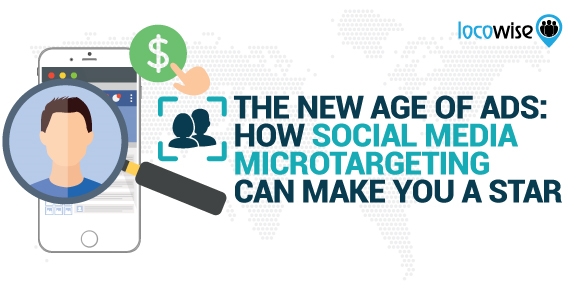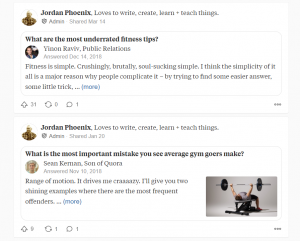— December 7, 2017
Facebook and Twitter are currently vowed with controversy with regard to their microtargeting advertising. Going as far as deleting data tied to the case, the social networking behemoths have reportedly helped Russian individuals swing the US 2016 Presidential elections by allowing them to run highly targeted and specific political ads.
At this point in time, both Facebook and Twitter are trying to help investigation proceedings and government officials are taking measure by putting new social media political advertising legislation in place.
And while we are in no place to discuss such political matters nor are we to downplay the importance of the issue at hand, this case does show something peculiar that brands can take advantage of when running their social media marketing strategies.

It’s no wonder that Sun Tzu’s Art of War is still considered to be one of the best business books to read. In war, the worst of humans and the best of strategies come to light. And there are a ton of similarities on an industrial battlefield as well.
Plus, in this informational war, if you can call it that, we have decided to take a look at the Russian social media ad debacle from a different perspective and see what corporate tactics we can learn from the political controversy.
At the same time, we’ll also try and give our take on the best way you can integrate a micro-targeting strategy for your next Facebook ad campaign. Without further adieu, let’s get started.
How the Targeting Strategy was (Reportedly) Implemented
Without getting too political and avoiding the controversies as much as possible, we’ll start by discussing the way the micro-targeting strategy was reportedly implemented by the Russian individuals.
For starters, the ad campaigns included viral-potential fake news reports to target specific groups from both sides of the political spectrum. Playing around from an angle of anger-induced sharing, the advertisers put in place ads that favored the Democratic Party and targeted them at Republicans and vice versa. And while the morality of it is certainly highly in question, there is something corporations can take away from all of this.
Why were the Ad Campaigns So Successful?
One of the biggest reasons why the campaigns were so successful was the factor we like to call “viral-potential.” In our blog posts, we use this phrase to refer to content that has the potential to go viral, based on certain criteria. Pretty straightforward, so far. Now, as we’ve discussed in previous articles on viral social media posts from experts, a huge part of what makes content go viral is emotion.
While anger is not necessarily the best corporate emotion to target via a social media strategy, there are a lot of other viral-ready feelings you can induce in your target audience to achieve a better conversion rate. And we hope that this conversation doesn’t make you uncomfortable, as emotions have been part of marketing for ages, as these historical examples show us.
There are two main points to be said about virality in social media. The first is that by having shareable content, you can achieve a huge ROI (return on investment) of your advertisements, resulting in the best exposure for the least amount of resources. The second is that viral has the potential to reach individuals outside of your core targeted audience and help you gain better growth numbers and brand reach.

Now, back to the discussion of emotion. While some still believe that random is the thing that makes content go viral, and at times it is, at the core of posts that reach millions lies certain emotion-inducing content.
Think Heineken’s Worlds Apart ad, or 84 Lumber viral stunt. Both of these ads commented on moral issues that made us feel passionate and supportive (compassion) towards the struggles of people. In addition, cats rule the internet for a reason. They are adorable and we LOVE them. Emotion plays a huge part in the virality of content.
DISCLAIMER: What Makes a Viral Social Media Campaign Moral?
Going further in our discussion, we can’t help but take into account the morality of such viral social media campaigns. It can be stated with a great level of certainty that what one finds to be moral, there will be someone who believes the opposite.
But outside of the boundaries of the extreme opinion sectors, a viral campaign is moral, as long as the campaign itself doesn’t persuade the audience into believing something that’s not true. Honesty in marketing can go a long way. We do not promote any type of misappropriate or unlawful marketing or advertising behavior and we merely analyze the facts.

How to Create a Micro-Targeting Strategy for Facebook
Now, the discussion can go on for days, but we must get down to business. How can you implement your own micro-targeting strategy on Facebook and get the best bang for your buck? Let’s discuss the matter in a few simple steps while diving further in what practices can help your campaign skyrocket your brand to new heights.
Step #1 – Start with a Marketing Plan
Just as with any other social media campaign, you should start your microtargeting endeavour by setting a clear marketing plan. What goals do you want to achieve? What is the purpose of this marketing campaign? Based on those factors, you will be able to better analyze the data and make the final decisions about the design, purpose and target group for the ads.
Step #2 – Analyze Your Target Audience
Probably the most important step in a micro-targeting campaign is identifying your target audience. Once you have a particular set of characteristics to define who is the target of your marketing campaign, you will be able to go into micro-targeting detail. Take into account that the target audience of such a campaign should be more clearly defined than the general audience of a brand or a product. Try to feature as many characteristics as possible.
Step #3 – Check What your Competitors are Doing
A great way to have more certainty and clarity about the expected results is to see what your competitors are doing.
Step #4 – Look for Alternative Targeting Methods
The second most important step in a microtargeting campaign is to look for alternative targeting methods. The best way to do so is to choose a few representative individuals of your target group and see what items they have in common. Do they have certain shared interests? Liked pages? Take that into account.
Step #5 – Analyze the Pricing and Start your Marketing Strategy
Once you do, you should proceed in analyzing the pricing. A rather tedious step, this will help you receive the best value for your resource investment. A certain ad targeting individuals that have a shared interest can sometimes be less expensive than an ad targeting people in a particular area. Think targeting people that like a local coffee shop, rather than people in the area of that coffee shop.
Step #6 – Create Target-Specific Content
Often overlooked, this step is just as vital for your microtargeting campaign as the rest. If you have a highly-targeted group, why go about posting the same old advertisement? Instead, promote posts that are specifically targeted to that particular marketing campaign and your particular target audience group.
Step #7 – Start your Marketing campaign (review and adapt)
Every miscalculation can result in huge losses for your company. Instead of going all-in with one single microtargeting campaign, try running a few different ones with a smaller budget to see what works and what doesn’t. Here, analytics will be of great help. Also, make sure that you don’t miss the review and adapt process. Whenever possible, always change your content to fit the audience, rather than trying to push and persuade an audience to try and like a certain type of content. Reserve the conversion for the product, rather than the content. Make the content you have the conversion mechanism.
New Changes to the Facebook News Feed
Facebook has recently started rolling out updates in different countries that allow only promoted posts in the feed of individuals. And that may a good thing for a micro-targeting campaign. But if you want to always stay ahead of the curve, you should keep close track of your analytics and adapt as much as possible.
Digital & Social Articles on Business 2 Community
(66)






